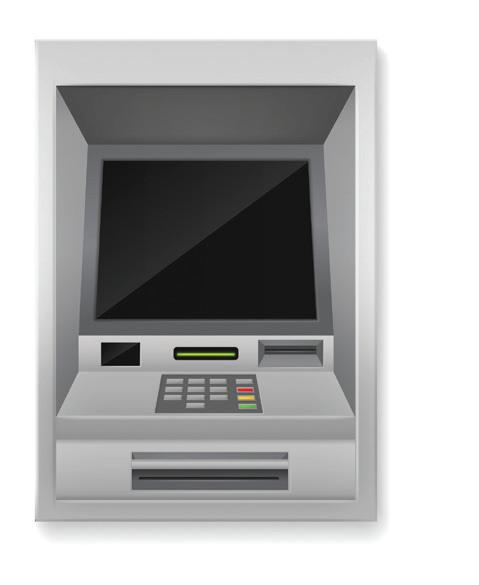
4 minute read
Are your prepared for ATM changes?
by Timothy A. Schenk KBA Assistant General Counsel tschenk@kybanks.com
Are you Prepared?
Advertisement
ATM
ATM Changes are on the Horizon
On September 21, 2022, the Architectural and Transportation Barriers Compliance Board (Board) issued a proposed rule that, if adopted, will require new Americans with Disability Act (ADA) and Architectural Barriers Act (ABA) compliance requirements for self-service transaction machines (SSTMs) across various industries, including automated teller machines (ATMs).
In issuing the proposed rule, the Board stated it is increasingly common for SSTMs to have touchscreens without a physical keypad or other tactile controls that pose barriers for users who are deaf or hard of hearing by failing to provide captioning and text equivalents for audible information. The Board also noted that these devices must be accessible to people with physical impairments, including those with wheelchairs and other mobility devices, have limited dexterity, or who are short of statute. Sufficient clear space at the device is necessary to accommodate wheeled mobility aids. Controls and features must not require delicate motor movements or fine dexterity.
The proposed rule would require “Clear floor or ground space is required so that people with disabilities, including those who use wheeled mobility aids, can approach and position at ATMs or fare machines in a forward or parallel direction. This clear space generally must be at least 30 inches wide and at least 48 inches deep. Additional space is required for maneuvering where this clear space is obstructed on both sides for more than half the depth.” “Operable parts for ATMs and fare machines must be located within accessible reach ranges. They must be usable with one hand, and not require tight grasping, pinching, or twisting of the wrist, or more than 5 pounds force to operate. Users must be able to differentiate each operable part by sound or touch without activation; touch activation is permitted if a key to clear or correct input is provided.”
“ATMs and fare machines must provide speech output (recorded or digitized human or synthesized) through a mechanism that is readily available to all users, such as an industry standard connector or telephone handset. The speech function must have volume control and allow users to repeat or interrupt output. Braille instructions for initiating the speech are required. ATM speech output must provide an equal degree of privacy” for all individuals.
“Additionally, ATM and fare machines must provide tactilely discernible input controls for each function. Numeric keys must be arranged in a 12- key ascending or descending telephone keypad layout, and the number five key shall be tactilely distinct from the other keys. Key surfaces not on active areas of display screens must be raised above surrounding surfaces. Where membrane keys are the only method of input, each shall be tactilely discernable from surrounding surfaces and adjacent keys. Visual contrast (either light-ondark or dark-on-light) is required between function keys and background surfaces and between function key characters and symbols and key surfaces. Tactile symbols are required for certain function keys including enter or proceed, clear or correct, cancel, add value, and decrease value.”
“The Guidelines also require that display screens be visible from a point located 40 inches above the center of the clear floor space in front of the machine. Display screen characters must have a cap height of at least 3/16 inch, be in a sans serif font, and contrast from the background either light-on-dark or dark-on-light.”
It is important to note that the proposed “ADA and ABA Accessibility Guidelines apply only to ATMS that are fixed or built-in, but not those that are moveable.” Furthermore, drive-up only ATMs are exempt from certain components of the proposed rule. There may also be exceptions in the final rule for the number of machines required at each location to meet this requirement.
These changes are extremely technical, but do not panic. Most modern ATMs have already incorporated these changes into their design and meet these specifications. Furthermore, the KBA has reached out to most ATM vendors that supply ATMs to our member banks, and those vendors have assured us that they are actively identifying customers’ ATMs that do not meet these requirements and will be reaching out to them. As one vendor stated, “We are not overly concerned with the consolidation of the three regulations since the standard ATMs that we sell and install today already meet the individual requirements listed. Whenever new interface requirements are added, we work directly with the ATM manufacturer to make sure that the ATM hardware, or its operating software, complies with the requirements.”
It is important to note that this is still a proposed rule and there is time to implement changes if the new rule is adopted. If you are concerned about the status of your ATM compliance please feel free to reach out to your vendor or the KBA as we will be glad to assist in any compliance questions to ensure you can meet your customer needs and maintain current compliance standards!








